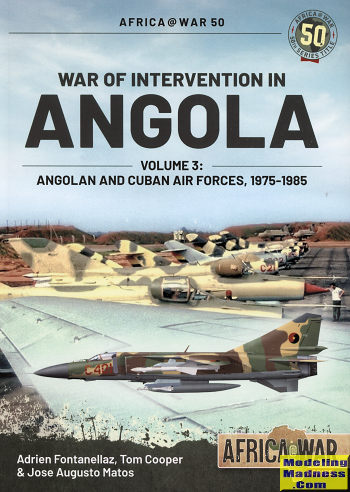 After
fighting insurgents in Angola for many years, Portugal decided to simply throw
in the towel and granted Angola its independence in 1975, helped along by a coup
it Portugal itself. The nation was then under the control of the MPLA, the
largest of the insurgent groups and one that was backed by Cuba. With the vacuum
left by the departure of the Portuguese military, the other groups that had been
ousted by the Portuguese felt that they should have another go at it.
After
fighting insurgents in Angola for many years, Portugal decided to simply throw
in the towel and granted Angola its independence in 1975, helped along by a coup
it Portugal itself. The nation was then under the control of the MPLA, the
largest of the insurgent groups and one that was backed by Cuba. With the vacuum
left by the departure of the Portuguese military, the other groups that had been
ousted by the Portuguese felt that they should have another go at it.
Thus began a long and protracted 'bush war' against the
various groups. Some backed by Congo and Zambia with others backed by South
Africa. This book is the third in a series on the Angola war, but concentrates
on the Angolan Air Force. The build up of the air force cannot be really be
described without also including the various campaigns of the Angolan/Cuban
Army.
During this time, Angola was far from poor, having both
petroleum and mineral wealth to bring in money for arms and that included
aircraft. Though the Angolan Air Force started with impressed private
aircraft, it eventually needed jet fighters and in this case it was the Soviet
Union that stepped in with this equipment. The Soviets also provided quite a bit
of heavy transport and pilots for these transport aircraft. For tactical
fighters, it was the Cubans who were the ones who provided pilots.
The Angolans sent men to various communist and socialist
bloc countries for pilot training, but this encompassed stays of 3-4 years and
only provided sufficient training on how to fly the planes in question. This did
not include how to fight with these planes, the results being that when Angolan
pilots finally got into combat, the losses were fairly high. Some of this was
eventually rectified, but not until many years later.
First jets sent to Angola were MiG-17s, followed by
MiG-21s of different variants. When Angolan pilots became available, they flew
transports, helicopters and the MiG-17s, with only the Cubans flying the
MiG-21s. However, even the Cubans were not trained on how to fight the aircraft
and this did not bode well when they came up against SAAF Mirage F.1s.
One recurring theme throughout the book was the lack of
infrastructure to operate these aircraft. First it was a lack of decent
airfields, then lack of servicing facilities, and a lack of deep maintenance.
Add to it aircraft that needed widespread radar control (which wasn't set up)
and you can see some of the issues facing the Angolans. No matter how much money
one tosses at a problem, without the proper equipment and trained personnel you
simply cannot expect the job to be done.
It all makes for a fascinating look at the situation
regarding the Angolan Air Force during its first ten years of existence. The
authors have really done their homework on this one, contacting as many people
involved during this time as possible. Their insights are very interesting
reading. Add in some great period photos and the usual number of nice color
profiles and you have a book that is truly a great read. Highly recommended.
April 2021
Copyright ModelingMadness.com
Review book courtesy of
Casemate Publishing, where you can order your copy
at this
link.
If you would like your product reviewed fairly and quickly, please
contact
me or see other details in the
Note to
Contributors.
 After
fighting insurgents in Angola for many years, Portugal decided to simply throw
in the towel and granted Angola its independence in 1975, helped along by a coup
it Portugal itself. The nation was then under the control of the MPLA, the
largest of the insurgent groups and one that was backed by Cuba. With the vacuum
left by the departure of the Portuguese military, the other groups that had been
ousted by the Portuguese felt that they should have another go at it.
After
fighting insurgents in Angola for many years, Portugal decided to simply throw
in the towel and granted Angola its independence in 1975, helped along by a coup
it Portugal itself. The nation was then under the control of the MPLA, the
largest of the insurgent groups and one that was backed by Cuba. With the vacuum
left by the departure of the Portuguese military, the other groups that had been
ousted by the Portuguese felt that they should have another go at it.